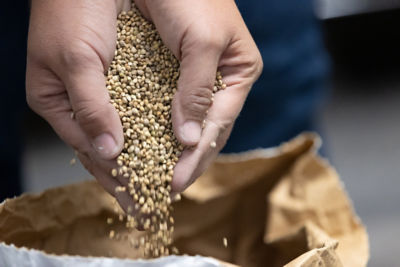Causal Agent
Fusarium oxysporum f. sp. cepae
Distribution
Worldwide
Symptoms
The first above ground symptoms are yellowing, curling and necrosis at the tip of leaf blades. With time, whole leaf blades show symptoms and eventually wither and decay. Infected roots are dark brown, flattened, transparent and sometimes hollow. When affected bulbs are cut vertically, they show a watery, brown discoloration of the outermost layer of the stem plate, which may progress up through the storage leaves. White mycelium of the fungus may colonize the stem plate and, eventually, roots may rot completely. Infected plants can be pulled easily because of their stunted, decayed root system. Infected bulbs may show no decay at harvest but may rot in storage.
 Foliar symptoms showing withering and necrosis of leaves.
Foliar symptoms showing withering and necrosis of leaves.
 Basal plate rot.
Basal plate rot.
Conditions for Development
Optimum temperature for disease development is 27°C (80°F) and infection is limited when temperatures are below 15°C (59°F). Onion plants can be infected directly by the pathogen at any stage, but injury to the roots, the basal plate or bulbs by onion maggots or other insects appears to increase the incidence of this disease. The fungus can persist in soil as resting spores called chlamydospores for several years. Spread of this fungus often occurs by movement of infested soil on equipment, in irrigation water or on infected onion sets.
Control
Growing varieties with tolerance to basal rot can reduce losses from this disease. Long term rotation with non-host crops for four years or longer may also help to reduce losses. Dipping seedlings in fungicide before transplanting can also reduce disease severity. Additionally, control of soil insects and foliage diseases, the use of healthy onion sets and avoidance of fertilizer injury all help to reduce basal rot losses.



